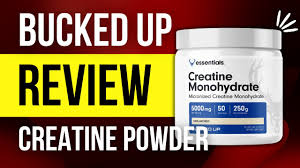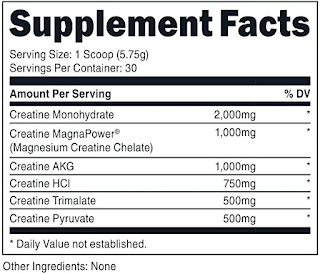Bucked Up Creatine Monohydrate - Reviewed
What we liked
What we didn't like
Would we recommend Bucked Up Creatine?
Where can I buy Bucked Up Creatine?
Nutritional info
Creatine Monohydrate Benefits
Introduction: What is Creatine Monohydrate and Why Does it Matter?
Creatine monohydrate is one of the most popular supplements on the market. It's used by athletes and non-athletes alike to improve performance, increase muscle mass, and reduce fatigue.
Creatine monohydrate is a supplement that is used to improve performance in athletes, but it can also have benefits for people who are not involved in athletics.
Studies show that it also has anti-ageing effects on health. It could even reduce the risk of dementia and Alzheimer's disease in older adults by up to 86%.
How Does Creatine Work?
Creatine helps in the production of ATP, which is a molecule that provides energy for muscle contractions. ATP is the energy source for all cells. It is made from Adenosine Diphosphate and Adenosine Triphosphate.
ATP, or adenosine triphosphate, is a nucleotide that provides the body with a form of energy. ATP is found in all living cells, where it transports chemical energy to power reactions that make life possible.
What are the Downsides of Creatine?
Creatine is generally considered safe to take, but some people can have negative side effects. It can cause dehydration, weight gain, muscle cramps, nausea, kidney problems and more.
Those who take creatine should drink plenty of water to avoid dehydration and drink protein shakes to avoid muscle cramps. They should also make sure to eat enough protein in order to maintain muscle mass without gaining any weight from the creatine.
Taking creatine as a pill can cause issues with the digestive system, so taking it as a powder is recommended.
Best Practices for Taking Creatine and Factors to Consider
When you take creatine, it should be taken with water or another liquid. You should also take it on an empty stomach to prevent stomach issues. Creatine can be taken up to 5 times a day, but it's best to only take it once or twice a day because the body will not absorb more than that.
Once creatine has been absorbed, it can last anywhere from 1 to 24 hours in the muscles before it is excreted.
Studies have shown creatine to be an effective and safe means for improving physical performance, muscle strength, and increasing lean body mass. Creatine supplementation has also been shown to improve brain function, mood and cognition in people suffering from brain injuries or severe mental fatigue.
Do I need to cycle off creatine?
Most people will take 4-6 weeks on and 2-3 weeks off. However, some people don't feel they need a break because they have been taking creatine for months or years without any problems.
No matter what your individual situation is, you should always consult with your doctor before starting any new supplement or any new exercise regimen.
Which Type of Creatine Should You Buy?
There are three types of creatine: monohydrate, ethyl ester, and micronized.
Monohydrate is the most common and cheapest form. Ethyl ester is more expensive but has a longer shelf life than monohydrate; it also has fewer side effects than monohydrate.
Micronized creatine is not as common as the other two types but it dissolves better in water than the other two types and doesn’t have any taste or odour so you can take it without mixing it with anything else.









